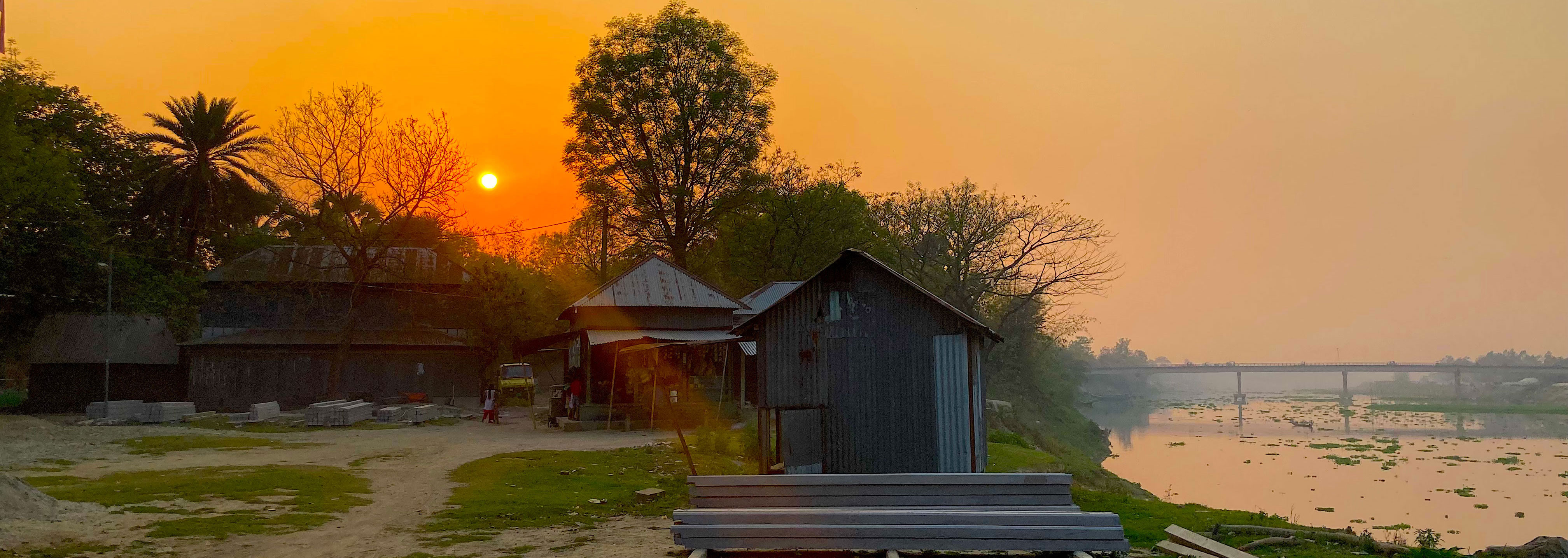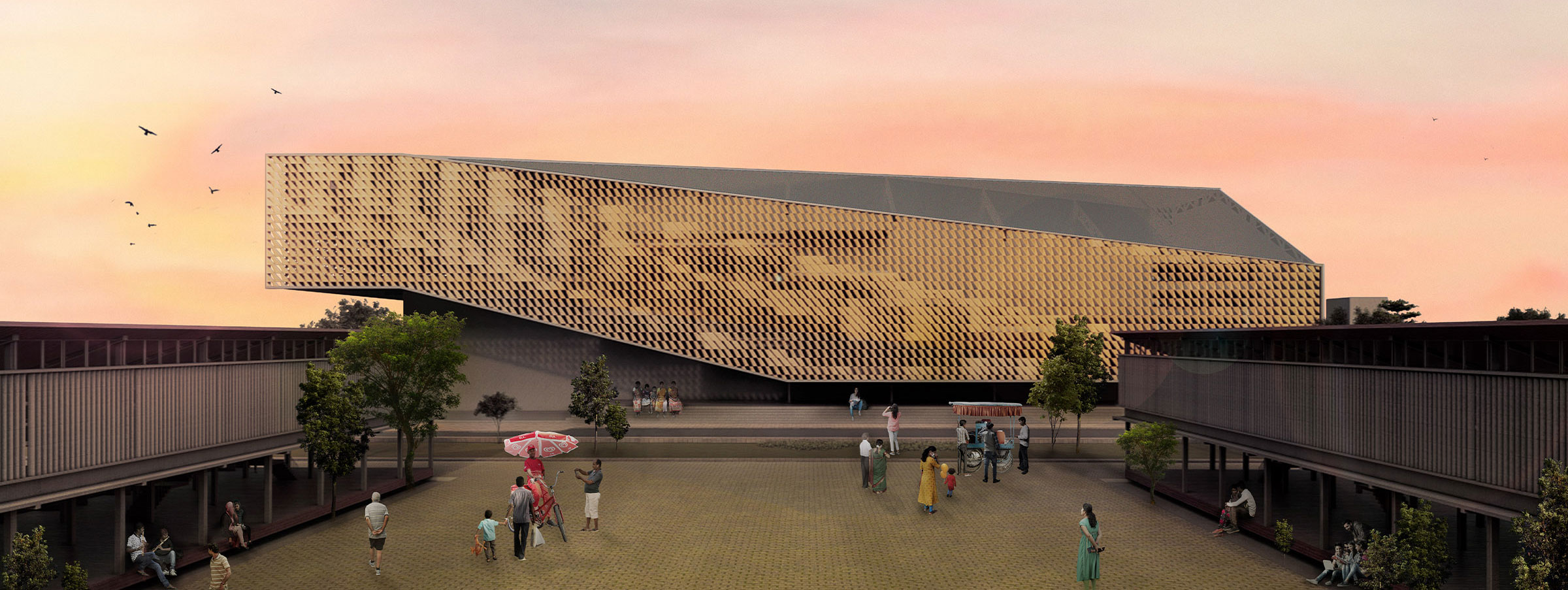Matuail

The Matuail "sanitary landfill site" in Dhaka, Bangladesh was established in 1993, and it is close to capacity in 2023 (although daily operations continue, and a large consignment of animal waste was disposed of there over the course of 4,310 separate trips in a single day in late June 2023.)
There is also a much longer history of the Matuail site. The Dhaka South City Corporation, which operates the site, was formed in 2011 with the division into two of the Dhaka City Corporation, which was in turn the successor of the municipal government of Dacca in East Pakistan, which had in 1947 superseded Nazia Khanum, Aspects of the Urban History, Social, Adminstrative and Institutional of Dacca City, 1921-1947 (School of Oriental and African Studies, University of London, 1982), p. 239.the "Dacca Municipality," established by the British imperial government in 1864. In its first annual report, published in 1869, the "Sanitary Commission of Bengal" concluded "Dacca," in First Annual Report of the Sanitary Commission for Bengal (Calcutta, 1869). 97-129, p. 120. of the new local administration of Dacca/Dhaka that "its failure as a sanitary body is most signal," that "keeping the roads in the European quarter metalled, and the drains open, exhaust the energies of the Commissioners," and that the "finances of the Municipality are insufficient to keep the city in a cleanly state."
Matuail -- and the fifty other sites of ultra methane emissions in the Greater Dhaka area that TROPOMI observed from the Sentinel 5 satellite in 2019-2020 -- constitute one of the most concentrated clusters of methane pollution anywhere in the world. The largest single source among all the 1,796 sites observed worldwide -- a rate of 574 tons of methane per hour, at the location [23.84, 90.42], on March 23, 2019 -- is in north Dhaka, close to the airport. (Another site, at [23.82, 90.07], is in Manikganj district, not far from the home of my ancestors by marriage.)
The Dhaka methane sites are the most vivid illustration of the two presumptions that are at the center of the 1800 Histories project -- that greenhouse gas emissions are co-located (or co-emitted) with other forms of air, water and soil pollution, and that there are local as well as global strategies for reducing global climate change.
Dhaka has been such a successful city for so long -- so industrious and so industrialized, with so many universities and medical centers, so many newspapers and research institutes -- that the pollution associated with landfill has been documented in profuse detail over many years. "The problems of markets, dairies, slaughter houses, tanneries, conchshell cutting, soap boiling and other commercial and industrial nuisances in Dacca" were "formidable," according to an urban Khanum, Aspects of the Urban History, p. 91.history of the late colonial period.
Methane is only the latest in a sequence of pollutants to be measured Mohammad Toha and Md Mostafizur Rahman, "Estimation and prediction of methane gas generation from landfill sites in Dhaka city, Bangladesh," Case studies in chemical and environmental engineering, Vol.7 (2023), 100302.in and around the site. Landfills contribute to local as well as global warming, and in Matuail, the temperature, as measured Md Sayeduzzaman Sarker, Umma Rafia Shoily, Nokibul Alam Chowdhury, Rafsun Ahmad, and Afzal Ahmed, "Environmental Monitoring at and around the Matuail Landfill Site of Dhaka City using Remote Sensing," Journal of engineering science (Khulna), Vol.12 (3) (2022), pp.127-138. using Landsat data, started to rise after 1998, and increased "drastically between 2008 and 2013... to 40-44 ℃ from 19-22 ℃ range." In 2011, the leachate (or water that leaks from solid waste) at Matuail was found MD Azim, M Mahabubur Rahman, Riaz Hossain Khan, and ATMM Kamal, "Characteristics Of Leachate Generated At Landfill Sites And Probable Risks Of Surface And Groundwater Pollution In The Surrounding Areas : A Case Study Of Matuail Landfill Site, Dhaka," Journal of Bangladesh Academy of Sciences, Vol.35 (2) (2011), pp.153-160. to contain high levels of heavy metals and other pollutants, with "very high potential for contaminating ground and surface water."
These are not abstract or atmospheric nuisances. There have been studies See the review in I. M. Faisal and S. Parveen, "Alleviation of environmental health impacts through an ecosystem approach – a case study on solid waste management in Dhaka City," Sustainable Development and Planning II, Vol. 1 (2005), 601-610. of the health of children working in the Matuail site since it first started to operate in the 1990s. In 2021, a study of children working as "permanent and/or temporary waste collectors" in Matuail found that 94 percent "suffered from many health problems, such as fever and fatigue due to tiredness, dizziness, and vomiting;" they were particularly "Their metabolic pathways are less developed in the ability to detoxify and excrete toxins. In addition, any disruption during their growth years can easily disrupt development of their organs, nerves, immunity, endocrine, and reproductive systems." Alam, M.M., Hossain, M.S., Islam, N., Murad, M.W. and Khan, N.A., "Impacts of Health and Economic Costs on Street Child Waste Collectors in Dhaka City," International Journal of Environment and Sustainable Development (2021), 20(1), 29-50."vulnerable to toxins because they ingest more water, food, and air per unit of body weight." The study included a "face-to-face questionnaire survey" given to fifty of the children. 64% of them "suffered from fever," 68% "felt tired due to their exertions," and 86% "were victims of dizziness." They were apprehensive about their own futures; "the most important issue for the waste collector children was the risk to their health, something that 94% of the children agreed to."
The mortality of children under five in Bangladesh has come down dramatically since the independence of the country in 1971; it is substantially lower than in India, and less than half that in Pakistan. The probability of dying at ages 5-14 has decreased much less. This too, in a country that has been such a model of human development, is a cost of the pollution "co-emitted" with greenhouse gases, and in the course of urban life.
Of the 1796 sites of ultra methane emissions that are the subject of this project, 323 were identified by the authors of the Science article as "natural." 274 were associated with coal, and the large majority -- 1199 sites -- with oil and gas. Most of the "natural" sites are associated with landfill; 154 are in Pakistan, 76 in Bangladesh, 56 in India, and 19 in Argentina. This is a misleading overview of worldwide methane emissions from landfill sites, for reasons to do with the limitations of the Sentinel 5 data; there were no observations of ultra methane emission sites in Indonesia, the Philippines, Brazil, Nigeria or Kenya. But the emissions are there, and while they are not "low-hanging fruit" -- as in the paternal rhetoric of "global" climate policy, or of rich countries as the gardeners of the universe -- they are sites of pollution of which the improvement would have large and immediate social benefits.
Bangladesh, and earlier East Bengal, has had a long history of projects of reform, as well as of universities and newspapers and environmental associations. The study of the Bangladesh sites will be continued, as the 1800 Histories project proceeds, in cooperation with these associations. The Sanitary Commission Report of 1869 outlined "Dacca," in First Annual Report of the Sanitary Commission for Bengal (Calcutta, 1869). 97-129, p. 120. multiple proposals for improvement, and estimated that with a municipal loan of "four or five lakhs" -- 400,000-500,000 Rupees -- Dacca/Dhaka could be restored "to a condition of healthy cleanliness;" "at present, something like Rupees 6,000 is all that is annually allowed for the conservancy and sanitary improvement of a town about three miles in length and about half a mile across."
"There was no dearth of theoretical propositions, planning and advice," in mid 20th-century Dacca, Khanum, Aspects of the Urban History, p. 93. "but one vital commodity was lacking -- money to realize the ideas." The World Bank later studied the infrastructure of East Pakistan, and then, with the government of Bangladesh, supported World Bank, "Staff Appraisal Report Bangladesh," May 20, 1991, available at https://documents.worldbank.org/en/publication/documents-reportsa new maternity hospital and Institute of Mother and Child Health in Matuail in 1991. The Japan International Cooperation Agency supported the renovation of the Matuail landfill site, from 2007 to 2013.
The ideas are local, most of all. In 2020 there was a project to re-use greenhouse gases from Matuail. There was a plan for an "Eco-City" in Matuail that was "on the cards" in 2021. An undergraduate from the Bangladesh University of Engineering and Technology, Zareen Tasneem Sharif, won a global prize for her thesis about Matuail. It is a visionary project of urban (and agricultural) architecture, Waste in the City, based on the "unique local recycling system" of Matuail. In Sharif's summary:
Dhaka has been dumping its waste into Matuail for more than 25 years. And for all these years the city has denied its existence, overlooking the fact that in these years, Matuail has turned into a mountain inside a city. The city has also forgotten the stories of Matuail and its people.
One of the many implausible comparisons in recent studies Md Sayeduzzaman Sarker, Umma Rafia Shoily, Nokibul Alam Chowdhury, Rafsun Ahmad, and Afzal Ahmed, "Environmental Monitoring at and around the Matuail Landfill Site of Dhaka City using Remote Sensing," Journal of engineering science (Khulna), Vol.12 (3) (2022), pp.133. of Matuail -- the head gardener's explanation in terms of the "currency" of the rich -- is that the landfill site "emits 4000 kilograms' methane in an hour which is equivalent to the emissions of 190,000 passenger cars." Whose car? And where? If one were to juxtapose stocks rather than flows, or the infrastructure of the capital-intensive economy of the green transition in, say, the United States -- the strategy of full-speed-ahead in the electric vehicle iteration of the auto-industrial society -- with the cost of the new projects for the re-invention of Matuail, then there is a different sort of comparison.
190,000 Teslas, in the United States in 2023, would cost about $9.5 billion. Which would go a long way to reducing global methane emissions, and to improving the lives of the exhausted children of Matuail, anxious about their own futures. The British "Civil Surgeon of Dacca" wrote First Annual Report of the Sanitary Commission, pp. 119, 450. in 1868 of the latest projects of reform (shortly before he returned to England "on medical certificate") that "the great obstacle to all this, and to all sanitary improvements, is the want of sufficient Municipal Funds." So too today; and the want of global as well as local imagination.

